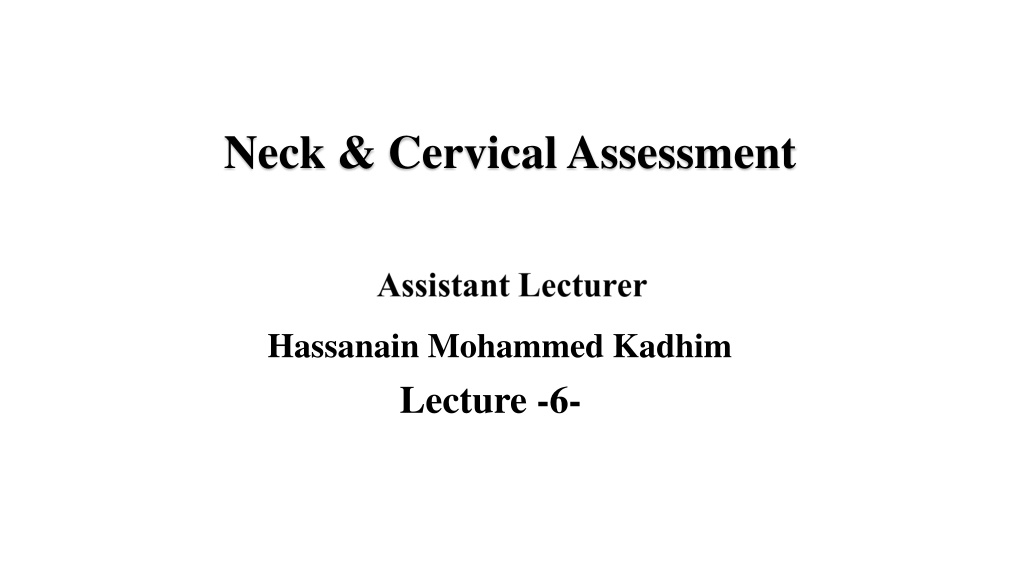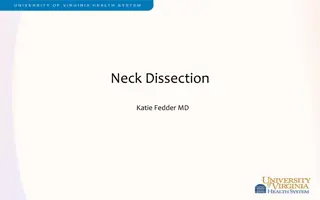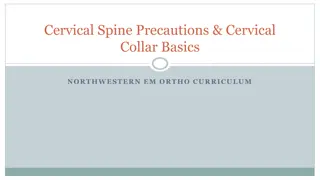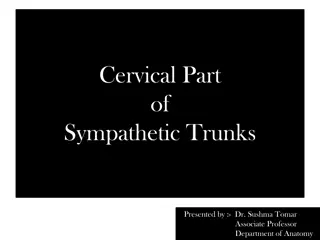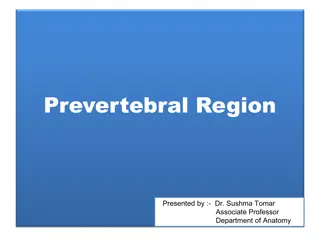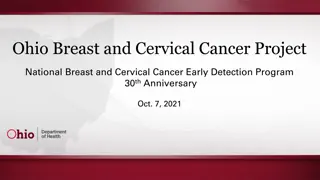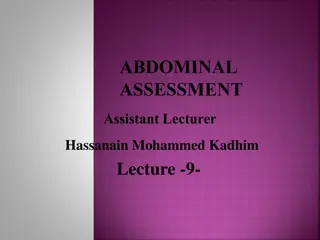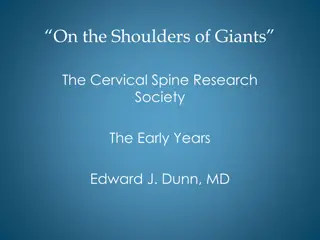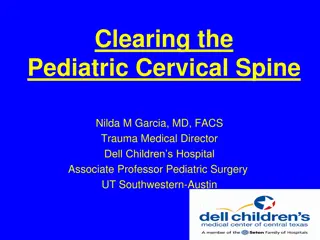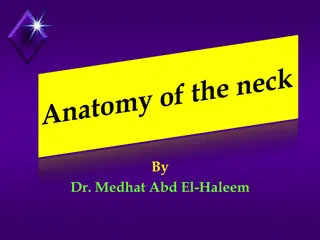Comprehensive Guide to Neck and Cervical Assessment by Hassanain Mohammed Kadhim
Learn how to inspect the neck for appearance and movement, differentiate between normal and abnormal findings, and perform palpation techniques for the trachea, thyroid gland, and cervical lymph nodes. Discover the important landmarks and characteristics to assess during a neck examination.
- Neck Assessment
- Cervical Evaluation
- Hassanain Mohammed Kadhim
- Palpation Techniques
- Lymph Node Examination
Download Presentation

Please find below an Image/Link to download the presentation.
The content on the website is provided AS IS for your information and personal use only. It may not be sold, licensed, or shared on other websites without obtaining consent from the author. Download presentation by click this link. If you encounter any issues during the download, it is possible that the publisher has removed the file from their server.
E N D
Presentation Transcript
Neck & Cervical Assessment Hassanain Mohammed Kadhim Lecture -6-
Inspect neck for the following: Appearance: Normal :Symmetrical, centered head position Movement: Smooth, controlled movements; range of motion (ROM) from: Flexion = 45 degree Extension = 55 degree Lateral abduction = 40 degree Rotation = 70 degree
Abnormal : Asymmetrical , mass benign or malignant ,client may complains pain with flexion or rotation ,pain associated muscle spasm cause by meningitis , generalized discomfort may related to trauma, inflammation of muscle or vertebral disease
Palpation Palpate trachea for position (tracheal rings, cricoid & thyroid cartilage). Midline position; symmetrical Palpate thyroid for the following: Position Characteristics, landmarks Midline ,Smooth, firm, no tender Ask the client to drink sips of water normally thyroid move upward . The movement not visible. in males the thyroid cartilage large or Adam s apple is more prominent than in females
Palpate cervical lymph nodes for the following: Size & shape: Cervical lymph nodes are usually not palpable. If palpable, they should be lcm or less & round. Delineation: Mobility Consistency Tenderness Discrete Mobile Soft No tender : : :
Lymph Nodes 1- Preaurical 2- Postaurical 3- Occipital 4- Tonsillar 5- Submandibular 6- Submental 7-Anterior cervical chain (deep cervical) 8- Posterior cervical chain 9- Supraclavical
Auscultation Use bell to assess bruit sound
